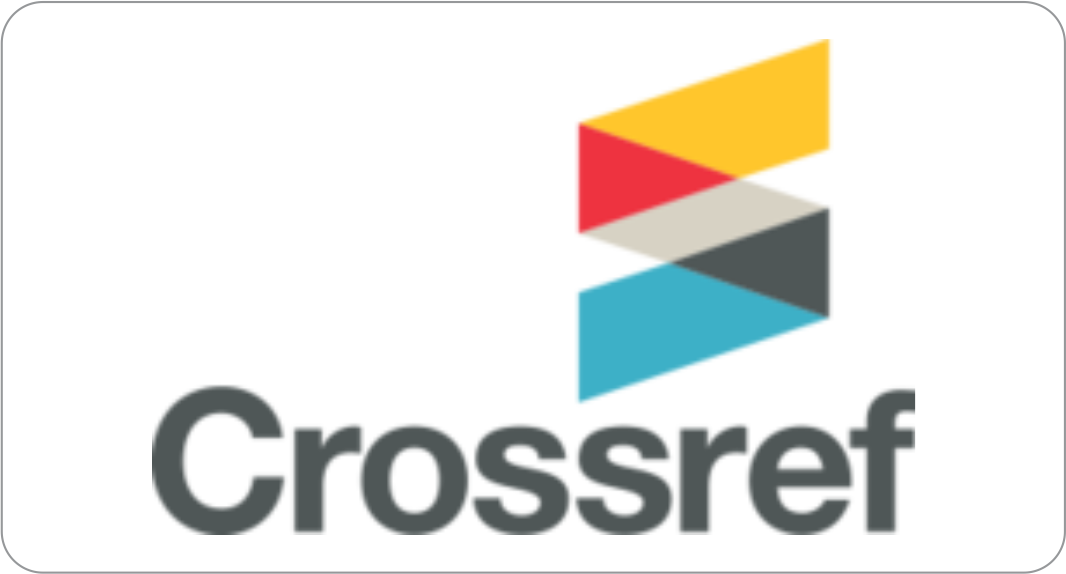HUBUNGAN GENETIK, ASUPAN MAKANAN, DAN SEDENTARY BEHAVIOR DENGAN KEJADIAN OBESITAS SISWA SLTA KECAMATAN TANAH ABANG JAKARTA PUSAT
Abstract
Obesitas merupakan keadaan kelebihan lemak tubuh yang abnormal. Obesitas yang terjadi pada masa remaja meningkatkan risiko obesitas saat dewasa dan menimbulkan beberapa masalah kesehatan.Penelitian ini bertujuan untuk mengetahui faktor dominan kejadian obesitas pada siswa SLTA di Kecamatan Tanah Abang Jakarta Pusat. Desain penelitian adalah cross sectional, pengambilan sampel menggunakan metode systematic random sampling, dan total sampel sebanyak 128 responden. Analisis data meliputi analisis univariat, bivariat, dan multivariat. Hasil penelitian menunjukkan bahwa prevalensi obesitas sebesar 33,6%denganrata-rata nilai z-scoresebesar1,37.Hasilpenelitianmenunjukkanada perbedaan rata-rata nilai z-score diantara keempat kategori riwayat genetik (p value = 0,0001). Ada hubungan yang signifikanantaraobesitasberdasarkannilai z-scoredengandurasitidur (p value = 0,0001, r = -0,328), sedentary behavior (0,007, r = 0,238), danasupanmakanan: lemak (p value = 0,0001, r =0,425), protein (p value = 0,001, r =0,294), karbohidrat (p value = 0,0001, r =0,418), energi (p value = 0,0001, r =0,568). Faktor yang paling dominan mempengaruhi nilai z-score adalah memiliki ibu obesitas. Pada responden yang memiliki ibu obesitas, nilai z-score lebih tinggi sebesar 0,618 dibandingkan dengan responden yang tidak memiliki kedua orang tua obesitas.Anak sekolah yang memiliki kedua orang tua atau salah satu orang tua yang obesitas sebaiknya mulai menjaga pola makan dan gaya hidup yang lebih baik dan sehat karena mereka mempunyai kerentanan secara genetik untuk menjadi obesitas.
Kata Kunci : Obesitas; Remaja;Genetik;Asupan; Sedentary Behavior
Association Genetic History,Nutrients Intake,and Sedentary Behavior withObesity in High School Students in Tanah Abang sub-District Central Jakarta
ABSTRACT
Obesity is a condition of abnormal excess body fat. Obesity in adolescence will increase the incidence of adult obesity and it could cause some health issues. This study aims to find the dominant factor of obesity in High School students in Sub-District Tanah Abang Central Jakarta. The study design used is cross sectional, samples achieved by using the systematic random sampling with 128 students as total samples. Analysis of data includes univarate, bivariate, and multivariate analysis (multiple linear regression). The results showed that the prevalence of obesity was 33.6% with average of z-score was 1.37.The results also showed that there were differences in the average of z-score between the four categories of genetic history (p value = 0,0001). There was a significant relationship between obesity based on the value of z-score with sleep duration (p value = 0,0001, r = -0,328), sedentary behavior (0,007, r = 0,238), and nutrients intake: fat (p value = 0,0001, r = 0,425), protein (p value = 0,001, r = 0,294), carbohydrate (p value = 0,0001, r = 0,418), energy (p value = 0,0001, r = 0,568). The most dominant factor affecting the obesity is having obese mothers. The z score of respondents who have obese mothers is 0.618 higher than those who do not have obese parents. High School students who have both parents or one of the obese parents should begin to maintain a better and healthier diet and lifestyle because they have a genetic susceptibility to obesity.
Keywords : Obesity;Adolescent ;Genetic; Nutrients Intake; SedentaryBehavior
Full Text:
PDFReferences
Adriani, M. (2012) Peranan gizi dalam siklus kehidupan. Jakarta: Kencana Perdana Media Group.
Alton, I. (2005) ‘The overweight adolescent’, Guidelines for Adolescent Nutrition Services. Minneapolis, MN: Center for Leadership, Education and Training in Maternal and Child Nutrition, Division of Epidemiology and Community Health, School of Public Health, University of Minnesota.
Aounallah-Skhiri, H. et al. (2011) ‘Nutrition transition among adolescents of a south-Mediterranean country: dietary patterns, association with socio-economic factors, overweight and blood pressure. A cross-sectional study in Tunisia’, Nutr J, 10(38), pp. 1–17.
Araújo, J., Severo, M. and Ramos, E. (2012) ‘Sleep duration and adiposity during adolescence’, Pediatrics, 130(5), pp. e1146–e1154.
Azwar, A. (2004) ‘Kecenderungan Masalah Gizi dan Tantangan di Masa Datang’, Disampaikan Pada Pertemuan Advokasi Program Perbaikan Gizi Menuju Keluarga Sadar Gizi, Di Hotel Sahid Jaya, Jakarta, 27.
Badan Penelitian dan Pengembangan Kesehatan et al. (2010) ‘Riset Kesehatan Dasar 2010’, Badan Penelitian dan Pengembangan Kesehatan. doi: 1 Desember 2013.
Badan Penelitian dan Pengembangan Kesehatan (2013) ‘Riset Kesehatan Dasar (RISKESDAS) 2013’, BADAN PENELITIAN DAN PENGEMBANGAN KESEHATAN KEMENTERIAN KESEHATAN RI TAHUN 2013. doi: 1 Desember 2013.
Banowati, L., Nugraheni, N. and Puruhita, N. (2011) ‘Risiko Konsumsi Western Fast Food dan Kebiasaan Tidak Makan Pagi Terhadap Obesitas Remaja Studi di SMAN 1 Cirebon’, MEDIA MEDIKA INDONESIANA, 45(2), pp. 118–124.
Barasi, M. E. (2010) at a Glance Ilmu Gizi. Jakarta: Erlangga. Available at: http://library.um.ac.id/free-contents/index.php/buku/detail/at-a-glance-ilmu-gizi-mary-e-barasi-alih-bahasa-hermin-halim-38818.html.
Baygi, F. et al. (2012) ‘Determinants of Childhood Obesity in Representative Sample of Children in North East of Iran’, Cholesterol, 2012.
Berkey, C. S. et al. (2003) ‘One-Year Changes in Activity and in Inactivity Among 10- to 15-Year-Old Boys and Girls: Relationship to Change in Body Mass Index’, PEDIATRICS. doi: 10.1542/peds.111.4.836.
Bibbins-Domingo, K. et al. (2007) ‘Adolescent Overweight and Future Adult Coronary Heart Disease’, New England Journal of Medicine. doi: 10.1056/NEJMsa073166.
Bibiloni, M. D. M. et al. (2010) ‘Prevalence and risk factors for obesity in Balearic Islands adolescents’, British Journal of Nutrition. doi: 10.1017/S000711450999136X.
Biro, F. M. and Wien, M. (2010) ‘Childhood obesity and adult morbidities’, American Journal of Clinical Nutrition. doi: 10.3945/ajcn.2010.28701B.
Chen, X., Beydoun, M. A. and Wang, Y. (2008) ‘Is sleep duration associated with childhood obesity? A systematic review and meta-analysis’, Obesity, 16(2), pp. 265–274.
Daniels, S. R. (2006) ‘The consequences of childhood overweight and obesity’, Future of Children. doi: 10.1353/foc.2006.0004.
Dieny, F. F. (2007) HUBUNGAN BODY IMAGE, AKTIVITAS FISIK, ASUPAN ENERGI DAN PROTEIN DENGAN STATUS GIZI PADA SISWI SMA. Universitas Diponegoro. Available at: http://eprints.undip.ac.id/26130/.
Engeland, A. et al. (2004) ‘Obesity in adolescence and adulthood and the risk of adult mortality’, Epidemiology. doi: 10.1097/01.ede.0000100148.40711.59.
Freedman, D. S. (2011) Global Perspectives on Childhood Obesity. Edited by D. Bagchi. USA: Elsevier. doi: https://doi.org/10.1016/C2009-0-01931-X.
Garaulet, M. et al. (2011) ‘Short sleep duration is associated with increased obesity markers in European adolescents: effect of physical activity and dietary habits. The HELENA study’, International journal of obesity, 35(10), pp. 1308–1317.
Guo, X. et al. (2013) ‘Prevalence and risk factors of being overweight or obese among children and adolescents in northeast China’, Pediatric research, 74(4), pp. 443–449.
Hajian-Tilaki, K. and Heidari, B. (2012) ‘Prevalences of overweight and obesity and their association with physical activity pattern among Iranian adolescents aged 12–17 years’, Public health nutrition, 15(12), pp. 2246–2252.
Hall, G. & (2013) ‘Buku ajar fisiologi kedokteran’, Journal of Chemical Information and Modeling. doi: 10.1007/s13398-014-0173-7.2.
Hamaideh, S. H., Al-Khateeb, R. Y. and Al-Rawashdeh, A. B. (2010) ‘Overweight and obesity and their correlates among Jordanian adolescents’, Journal of Nursing Scholarship, 42(4), pp. 387–394.
Hidayati, S. N., Irawan, R. and Hidayat, B. (2010) ‘Obesitas pada anak’, Buku ajar endokrinologi anak.
Jacobs, D. R. (2006) ‘Fast food and sedentary lifestyle: a combination that leads to obesity’, The American journal of clinical nutrition, 83(2), pp. 189–190.
Kelishadi, R. et al. (2007) ‘Association of physical activity and dietary behaviours in relation to the body mass index in a national sample of Iranian children and adolescents: CASPIAN Study’, Bulletin of the World Health Organization, 85(1), pp. 19–26. doi: 10.1590/S0042-96862007000100008.
Kemenkes RI (2013) ‘Angka Kecukupan Gizi yang Dianjurkan Bagi Bangsa Indonesia’, Jakarta. doi: 10.1017/CBO9781107415324.004.
Kementrian Kesehatan RI (2010) Standar Antropometri Penilaian Status Gizi Anak. Jakarta: Kementerian Kesehatan RI.
Kleiser, C. et al. (2009) ‘Potential determinants of obesity among children and adolescents in Germany: results from the cross-sectional KiGGS Study’, BMC public health, 9(1), p. 46.
Knutson, K. L. (2005) ‘The association between pubertal status and sleep duration and quality among a nationally representative sample of US adolescents’, American Journal of Human Biology, 17(4), pp. 418–424.
Knutson, K. L. et al. (2007) ‘The metabolic consequences of sleep deprivation’, Sleep medicine reviews, 11(3), pp. 163–178.
Kuriyan, R. et al. (2007) ‘Television viewing and sleep are associated with overweight among urban and semi-urban South Indian children’, Nutr J, 6(25), pp. 1–4.
Levy, P. S. and Lemeshow, S. (2011) Sampling of Populations: Methods and Applications: Fourth Edition, Sampling of Populations: Methods and Applications: Fourth Edition. doi: 10.1002/9780470374597.
Liou, Y. M., Liou, T.-H. and Chang, L.-C. (2010) ‘Obesity among adolescents: sedentary leisure time and sleeping as determinants’, Journal of advanced nursing, 66(6), pp. 1246–1256.
Meyer, K. A. et al. (2012) ‘Sleep duration and BMI in a sample of young adults’, Obesity. doi: 10.1038/oby.2011.381.
NUSA, A. F. A. and Adi, A. C. (2012) ‘HUBUNGAN FAKTOR PERILAKU, FREKUENSI KONSUMSI FAST FOOD, DIET DAN GENETIK DENGAN TINGKAT KELEBIHAN BERAT BADAN’, Media Gizi Indonesia, 9(1).
Patel, S. R. and Hu, F. B. (2008) ‘Short sleep duration and weight gain: a systematic review’, Obesity, 16(3), pp. 643–653.
Rathnayake, K. M., Roopasingam, T. and Wickramasighe, V. P. (2014) ‘Nutritional and behavioral determinants of adolescent obesity: a case-control study in Sri Lanka’, BMC public health, 14(1), p. 1291.
Rossner, S. (2012) Ilmu Gizi (Essentials of Human Nutrition); Kelebihan Berat Badan dan Obesitas (terjemahan). Jakarta: Buku Kedokteran EGC.
Schwarz, S. W. and Peterson, J. (2010) ‘Adolescent obesity in the United States: Facts for policymakers’.
Sherwood, L. (2013) Fisiologi Manusia dari Sel ke Sistem, Fisiologi Manusia dari Sel ke Sistem. doi: 10.1177/0165551506070739.
Sidiartha, I. G. L. and Juliantini, N. P. L. (2013) ‘HUBUNGAN RIWAYAT OBESITAS PADA ORANGTUA DENGAN KEJADIAN OBESITAS PADA ANAK SEKOLAH DASAR’, Unpublished.
Soetjiningsih (2012) Tumbuh Kembang Anak Edisi 2. Edisi 2. Edited by G. Ranuhm IG N. Jakarta: Buku Kedokteran EGC.
Song, Y. et al. (2010) ‘Secular trends in dietary patterns and obesity-related risk factors in Korean adolescents aged 10–19 years’, International Journal of Obesity, 34(1), pp. 48–56.
Spruijt-Metz, D. (2011a) ‘Etiology, treatment, and prevention of obesity in childhood and adolescence: A decade in review’, Journal of research on Adolescence, 21(1), pp. 129–152.
Spruijt-Metz, D. (2011b) ‘Etiology, treatment, and prevention of obesity in childhood and adolescence: A decade in review’, Journal of Research on Adolescence. doi: 10.1111/j.1532-7795.2010.00719.x.
Taheri, S. (2006) ‘The link between short sleep duration and obesity: we should recommend more sleep to prevent obesity’, Archives of disease in childhood, 91(11), pp. 881–884.
Teshome, T., Singh, P. and Moges, D. (2013) ‘Prevalence and associated factors of overweight and obesity among high school adolescents in urban communities of Hawassa, Southern Ethiopia’, Current Research in Nutrition and Food Science Journal, 1(1), pp. 23–36.
Tzou, I. L. and Chu, N.-F. (2012) ‘Parental influence on childhood obesity: A review’.
Wahyu, G. G. (2009) Obesitas Pada Anak. Jakarta: Benteng Pustaka.
Wilborn, C. et al. (2005) ‘Obesity: prevalence, theories, medical consequences, management, and research directions’, J Int Soc Sports Nutr, 2(2), pp. 4–31.
Woon, F. C., Chin, Y. S. and Nasir, M. T. M. (2014) ‘Association between behavioural factors and BMI-for-age among early adolescents in Hulu Langat district, Selangor, Malaysia’, Obesity research & clinical practice.
Yensel, C. and Tolman, C. (2011) ‘Nursing Perspective on Childhood Obesity’, in Global Perspectives on Childhood Obesity. doi: 10.1109/ICIP.2011.6116147.
Zurriaga, O. et al. (2011) ‘Factors associated with childhood obesity in Spain. The OBICE study: a case–control study based on sentinel networks’, Public health nutrition, 14(06), pp. 1105–1113.
DOI: http://dx.doi.org/10.30633/jkms.v10i1.308
Refbacks
- There are currently no refbacks.
e-ISSN : 2540-9611
p-ISSN : 2087-8508
Publish by Stikes Syedza Saintika Padang (Jl. Prof. Dr. Hamka No. 228 Air Tawar Timur Padang)
Contact Person :
Ns. Honesty Diana Morika,M.Kep
Editor In Chief
Pusat Penelitian dan Pengabdian Masyarakat
STIKes SYEDZA Saintika Padang
Phone: 082384992512
Wiya Elsa Fitri, M.Si
Editor
Pusat Penelitian dan Pengabdian Masyarakat
STIKes SYEDZA Saintika Padang
Phone: 08116609525
Jl. Prof. Dr. Hamka No. 228 Air Tawar Timur Padang - Sumatera Barat
Email: [email protected]







This work is licensed under a Creative Commons Attribution 4.0 International License.





